This post with fun facts about Thailand is part of the series of facts posts I do for every country I have articles about here on WonderfulWanderings.com. I hope you’ll enjoy them!
89 Fun Facts About Thailand
This post is part of a series of fun facts posts I’m doing for every country I have articles about here on the blog. Given their nature, these posts are research-based and even though a lot of time has gone into them, it’s still possible a mistake has sneaked in. If you see something that looks incorrect while going through these Thailand fun facts, please let me know at wanderer [at] wonderfulwanderings.com and I’ll look into it. Thanks!
1. Thailand is a relatively new name for the country. Thailand’s name before 1939 was “Siam” and it was Siam again during the period from 1946-1948.
2. The official English name for the country is “The Kingdom of Thailand”.
3. The term “Siamese twins” originated here when the country was still known as Siam. Two brothers, Chang and Eng Bunker were joined at the chest and their life inspired the term, which has now been replaced by the preferred term “conjoined twins”.
4. The blue-eyed felines, Siamese cats, are native to Thailand.
5. The Southwest and Northeast monsoon winds are the key influencers of Thailand’s climate.
6. Thailand has three “seasons” – wet, cool and hot. Typically, 6 months of rain, 3 months of dry, cool temps and 3 months of heat are seen annually.
7. While tap water is not safe for drinking in Thailand, local beer is. The high level of alcohol content in Thai beer kills the germs and it costs as little as a bottled water, making it a popular beverage around the country.
8. Thailand is the second-largest exporter of rice in the world, the most esteemed being Jasmine Rice which is indigenous to the country.
9. Rice is a staple at all meals, including breakfast and dessert. Rice is so important that in Thai, when one says they are hungry, the words literally translate to “I want to eat rice”.
10. Shaking hands is not common in Thailand. A typical Thai greeting is the “Wai”. Place your hands together and raise them upwards towards your face while lowering your head in a slight bow.
11. The higher you raise your hands during the Wai greeting, the more polite. It represents the status of the person you greet. For example, hands should be raised all the way to the bridge of your nose when greeting the elderly, but only to your chest for a peer.
12. Man-eating sharks are not native to the waters of Thailand, but poisonous jellyfish are.
13. The Tuk Tuk, an open air 3-wheel vehicle, originated in Thailand and is a common mode of transportation in Bangkok. The name “Tuk Tuk” is an onomatopoeia, mimicking the noise of the 2-cycle engines commonly used in the vehicles.
14. Bankok is currently the world’s most visited city, coming in first place in both 2016 and 2017.
15. The geography of the country is incredibly diverse, with mountains, rivers, plains, woodlands, waterfalls, beaches and islands all featured throughout Thailand’s six regions.
16. In Thai, the word “ko”, meaning “island”, precedes the name of the island. When saying or writing the name of an island in English, either leave “ko” off (Phuket Island) or leave “island” off (Ko Phuket). If you say “Ko Phuket Island” it is redundant as it would translate into “Island Phuket Island”.
17. Thailand is the world’s 50th largest country, just slightly larger than Spain.
18. The current government, adopted in 1932, is similar to England – a democratic system with a Monarch sitting as Head of State.
19. Thailand is the only country in Southeast Asia that was never colonized by a European country.
20. The most prominent religion of Thailand, which is also the national religion, is Theravada Buddhism with other Chinese indigenous religions and Hinduism also being practiced.
21. Thailand is generally known as “The Land of Buddhism”, and depending on the year, it ranks in the first or second spot as “country with the largest percentage of Buddhist population”, with about 95% of the country practicing. Other countries it trades spots with on the list are China and Cambodia.
22. Buddhism is so highly regarded in the country, it is tradition for men to become monks at some point before they are 20 years old, even if it’s just for a short period of time.
23. The typical duration as a monk in Thailand is about 3 months.
24. If you’re looking for fun facts about Bangkok: In Bangkok, you can spy Buddha reclining in the temple of Wat Pho. This gold-plated statue with mother of pearl decorated eyes and feet ranks as one of the most magnificent giant Buddhas in the world.
25. Bangkok is also home to two Buddhist universities with several thousand monk students.
26. “Wat” is the word for a Buddhist monastery or temple.
27. There are about 35,000 temples in Thailand. Remember, to visit these holy sites, modest dress is required. No shorts, no sleeveless tops!
28. Visitors can learn the fundamentals of meditation (a key principle of Buddhism) at wats across the country, and some wats in Chiang Mai allow visitors the opportunity to chat with monks to gain a better understanding of Buddhism.
29. Not all Buddhists are vegetarians. According to Theravada, the Buddha allowed monks to eat pork, chicken, and fish if the monk knew that the animal was not killed on their behalf.
30. Meat in Thai dishes is traditionally served in bite-size pieces in order to abide by the Buddhist custom that no whole animal be cooked and served.
31. Spirit or phi houses are common to find outside of Thai buildings. Gifts and offerings are presented to take care of the spirits so they don’t bother those living in close proximity.
32. During the full moon in February, the entire nation celebrates the festival of Makha Puja – one of the most important dates on the Buddhist calendar. Candlelight processions at the temples occur after sunset and are quite beautiful.
33. Songkran is a Buddhist festival that tourists can participate in. During the hottest month of the year – April – friendly water fights and parties take place in the streets for all to join. The water signifies washing away all the misfortunes of the past year, so grab a super-soaker and join in!
34. Looking to learn the art of massage? Wat Pho (the temple with the reclining Buddha) has a massage school teaching traditional Thai massage on its grounds.
35. The temple of Wat Bang Phra sees thousands of people each year for the purpose of receiving the traditional Sak Yant tattoo, believed to offer protection against danger and death, and bring luck, power, and courage.
36. The traditional method of creating a Sak Yant tattoo involves using a two-foot-long bamboo needle, but not to fear, other tattoo artists around the country will create these designs using electric machines.
37. Avoid offending locals when getting inked in Thailand. Don’t get a tattoo below the waist as the further you go from the head, the more disrespectful and DO NOT get an image of the Buddha.
38. The Grand Palace in Bangkok is one of the most frequented attractions in the world with an estimated eight million tourists visiting each year.
39. Don’t forget athletic shoes when visiting Chiang Mai’s temple of Doi Suthep – the staircase to the temple has over 300 steps.
40. Floating water markets were once commonplace in the capital of Thailand, prior to the construction of roads. If you venture outside the city center, some of these colorful boat markets still exist and are quite the experience to visit.
41. The Chatuchak Weekend Market in Bangkok is one of the biggest in Asia, with aisle upon aisle of vendors selling just about anything you can imagine – perfect for any shopaholic. Not to mention, its got a few great scores for foodies as it’s known for dessert vendors, especially those selling coconut ice cream!
42. The more you use the Thai language in market bartering, the less likely you are to be ripped off. Knowing a few numbers and the phrase thao rai (how much) will get you far.
43. Khao Yai National Park, protected by UNESCO, was the first official national park established in the country.
44. Many visitors dream of spending time with elephants, monkeys, and tigers, but not all sanctuaries are created equal. Ethical sanctuaries that are rescuing and rehabilitating animals, like the Elephant Nature Park near Chiang Mai or Boon Lott’s Elephant Sanctuary in the province of Sukhothai, give visitors a chance to interact with rehabilitated animals responsibly. Do your research before booking!
45. Elephants are a symbol of Thailand, and at the start of the 20th century, over 300,000 existed in the wild. Today, estimates of 6,000 elephants remaining, with half in captivity, highlight the urgent need for conservation and change in elephant tourism.
46. Both the smallest mammal, the bumblebee bat, and the largest fish, the whale shark, are found in Thailand.
47. With whale sharks being frequent visitors to Richelieu Rock and Hin Daeng in April of each year, divers looking to swim with the giant fish often have Thailand on their bucket list.
48. Logging is completely banned in Thailand. Only about 1/4 of the forests that once existed still remain.
49. Want to eat a scorpion? Khao San Road is the place to go. Popular with backpackers, this stretch of road is home to budget-friendly, unique grub!
50. While plenty of red light districts can be found throughout the county, prostitution was actually banned in 1960. That being said, there are still loads of seedy and risqué establishments in these districts for locals and tourists alike.
51. Muay Thai is the national sport in Thailand and is like what football is to the United States or soccer (football) is to Europe. Muay Thai matches are even considered sacred.
52. To greet someone in Thai, use the word ‘sawadee’ followed by ‘kah’ for females and ‘kraap’ (soft r) for males.
53. To avoid being labeled as rude, don’t point at another person with your index finger or your feet.
54. Chopsticks are not typically used in Thailand, except when eating Chinese dishes that have become part of the cuisine culture. Forks and spoons are the utensils used most frequently, but if you need to cut something, don’t expect a knife. Thais use the side of their spoons to cut and forks only if it is absolutely necessary.
55. Don’t dish up one of each type of food on your plate at the beginning of a meal in Thailand as this is considered to be rude. It is more polite to take a helping of rice along with one to two dishes, then try a few more as the meal progresses should you still be hungry.
56. To let someone know you enjoyed a meal, it is polite to leave a small bite or two on your plate. This signifies it was tasty and that you are full, as a clean plate implies there wasn’t enough to eat.
57. If you are invited into someone’s home, remember to step OVER the threshold when entering the door and not on ON it. It is believed that a spirit lives in the threshold, and thus is respectful not to stomp on it.
58. Another tip when visiting someone’s home – do not sit with your legs stretched out in front of you. In homes, it is customary to sit on the floor, with women tucking their legs to the side and men sitting with their legs crossed.
59. As Buddha is such an important figure in Thai culture, it is important not to stand above any image of the Buddha. The same is true for images of the king!
60. As the image of the king appears on Thai currency (also know as Bahts), it is actually illegal to step on money in the country.
61. Speaking of money, one of the most common scams is the Baht Scam. Shopkeepers claim the baht you hand them is fake, they take the bill out back to “inspect” it, swap it with an actual counterfeit baht, then give you the counterfeit money and make you pay with a different form of payment. You can avoid this by inspecting the serial numbers at the bottom of the baht prior to handing it to the shopkeeper, and make sure the shopkeepers sees you doing it!
62. Another scam to note is the Sombondee Restaurant Scam. Tuk tuk and taxi drivers get a kickback for delivering you to the Sombondee Seafood Market with it’s inflated prices instead of the popular chain restaurant known as Somboon Seafood. Make sure you are clear as to where you want to go!
63. Movie buffs will be thrilled to visit the waterfall where Leonardo Dicaprio takes his famous leap in the movie The Beach. Haew Suwat Waterfall is a stunning sight at 20 meters tall just inside Khao Yai National Park.
64. Along the border of Myanmar, reside Thailand’s largest park, Kaeng Krachan National Park. This is often listed as the best bird watching location in Asia, not to mention it’s a place to see elephants, leopards and gibbons in the wild.
65. At 700 meters high, Krok E-Dok Waterfall in Saraburi is both the highest and largest fall of central Thailand. There are seven cascading falls that make up its entirety, but be warned, it takes almost a full day on the trail to view this splendid sight.
66. While most Thai laws are similar to other countries, a few interesting laws to keep in mind are 1) Wear underwear when leaving the house and 2) Wear a shirt when driving a car. Forgetting those garments of clothes are against the law!
67. You may know a bit more about the Thai language than you think. English phrases have been adopted into everyday conversation. These words are called tap sap and have slightly different pronunciations, but include words like guest house, hotel, computer, taxi, disco, and clinic.
68. If you enjoy Red Bull energy drinks, you can thank Chaleo Yoovidhya of Thailand. Chaleo introduced an energy drink named Krating Daeng in Thailand which inspired Austrian Dietrich Mateschitz to create a similar recipe that would suit Westerners’ tastes. In partnership with Chaleo, the two founded Red Bull GmbH in Chakkapong, Thailand.
69. Tuk-tuks are a fun mode of transportation in Thailand, but anything over 30 minutes is uncomfortable, so have other means of transportation in mind for long-distance journeys.
70. In the category of not-so-fun Thai facts: rail services in Thailand are notoriously late, we’re talking 3-4 hour delays late. If you have an urgent place to be, consider a plane.
71. With logging banned, the future of Thailand’s distinctive long-tail boats are at risk. Timber to create the hulls must be imported and now a hull for a boat that used to cost about 3,000 baht (US$83) is now 200,000 baht (US$5,500). This has led to more speedboats on the waterways.
72. Traditional long-tail boats are made using techniques passed down through families and no designs are used in their creation – it’s completely up to the master builder!
73. As spirits are an important part of Thai culture, captains of long-tail boats paint their vessels with colors they feel pay the most respect to the water spirits. This in turn is to ensure safe travels and nets full of fish.
74. Lotus flowers and colorful silks also adorn the bowspirit of the long-tail boats as respect to Buddha. It is therefore one part of the boat you should not touch.
75. The Siamese Crocodile is nearly extinct in the wild, but a few can still be spotted in Pang Sida National Park and Kaeng Krachan National Park.
76. Most people in Thailand like to drink their beer on the rocks. They will order beer with nam keng (ice).
77. To drink the Thai way, order a bottle of spirits to share. A bucket of ice and a variety of mixers are also ordered and restaurant staff will refill the bucket of ice throughout the night as you enjoy.
78. Another interesting fact about Thailand is that to “cheers” in Thai, you should raise your glass (not too high), smile and chone gaow (touch glasses).
79. Locals will find it amusing to watch a foreigner try to handle a shot of the local moonshine made from fermenting, you guessed it, rice! Known as lao khao, it is made both commercially and brewed in villages.
80. Bangkok was once a city on stilts above canals or khlongs. Waterways were used to transport and travel throughout the city, similar to Venice. The canals have since been built over and are roads in the current day.
81. Do you like scavenger hunts? In Bangkok, you can hunt down all the temples stamped in the baht coins. They are all found in the city and can be located over the course of a day.
82. When greeting or thanking a monk, give them a higher wai — the prayer-like gesture with slight bow described earlier— than usual. But don’t wait for a monk to return the gesture – they are not expected to.
83. To take a photo of Buddha or not in Thailand? Unlike Japan, it is generally acceptable to snap a shot of Buddha in temples unless a sign instructs otherwise. Do keep in mind, taking a selfie with your back turned to Buddha is highly frowned upon though, so be respectful in your photography.
84. Some temples sell trinkets to raise money, and while it’s not illegal to purchase a small Buddha statue in Thailand, taking it out of the country is.
85. There are five UNESCO World Heritage Sites in Thailand, with three being cultural and two natural.
And for some final Thailand Trivia:
86. Ever wondered what Buddhist hell is supposed to be like? You can walk through a garden of statues depicting the various levels of pain at Wang Saen Suk Hell Garden near Bangkok. Be warned, it’s a bit gruesome!
87. The Durian, a fruit of Thailand, is so pungent it’s banned from hotels, trains and public places, and we can’t blame them. It’s smell is that of rotting sweet onions and lingers on clothes. However, the fruit itself, is similar to marshmallow and whipped cream, making it a popular ingredient in many Thai desserts.
88. If you love desserts, Thai khanom are popular treats made of flour, sugar, and coconut, popular for their fun shapes and colors. The most unique khanom is Leum kleun, a version so silky smooth its name literally means “I forgot I swallowed.”
89. If you’ve ever wanted to use a golden restroom, you have the chance to in Thailand. The White Temple, Wat Rong Khun is not only stunning in the moonlight with its white walls and glass mirrors, but it is humorously known as being home to Thailand’s most beautiful bathroom.
Learn more interesting things about Thailand
And that was it! I hope some of this trivia about Thailand was interesting. Are there other things to know about Thailand that I didn’t mention? Interesting facts about Thailand in particular – nothing super practical? Let me know in the comments!

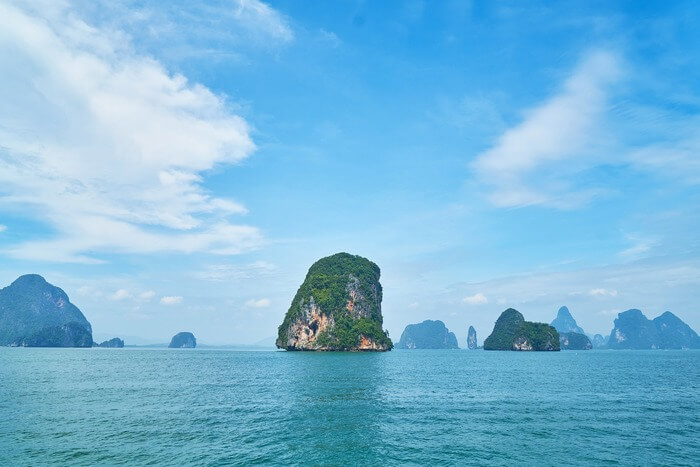
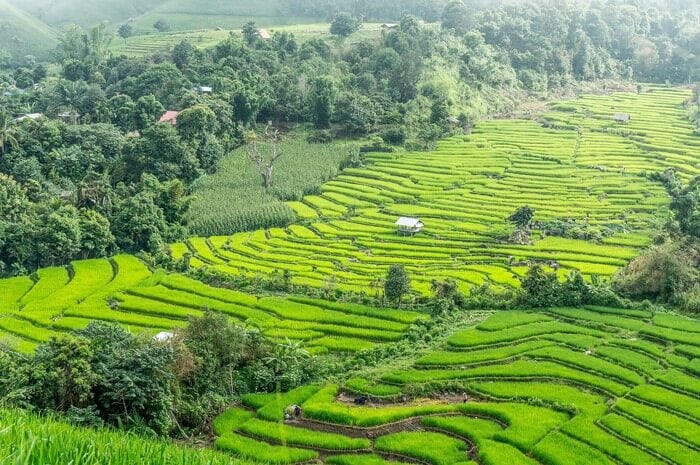
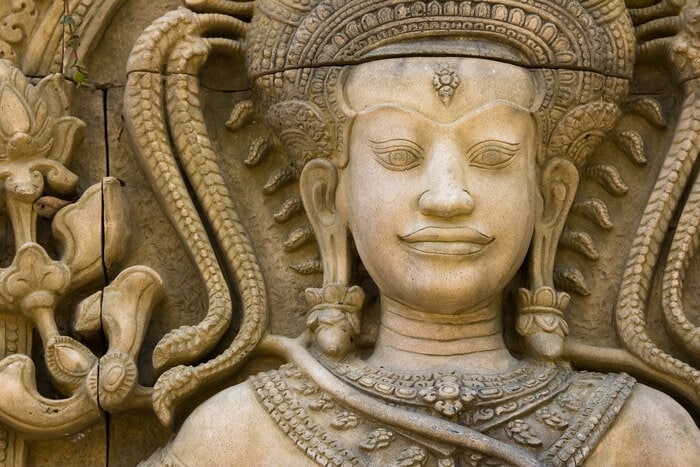
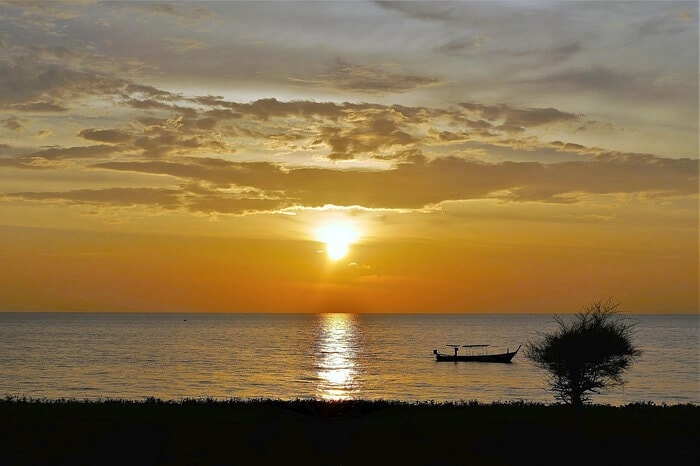
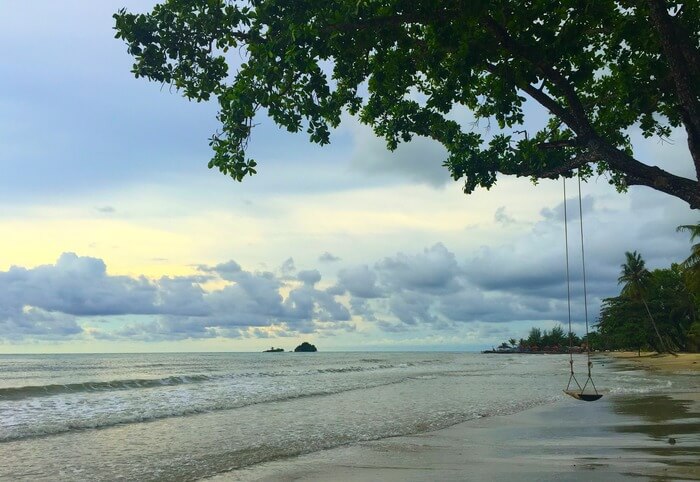
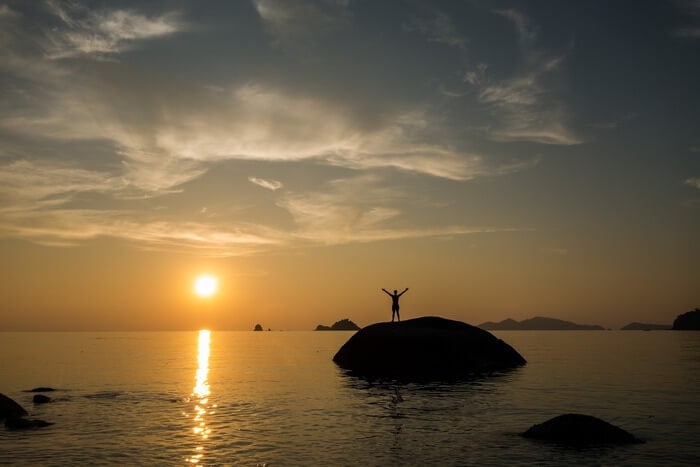
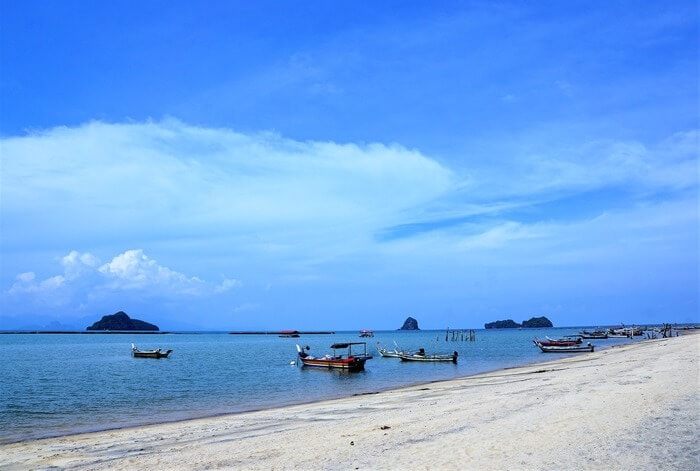
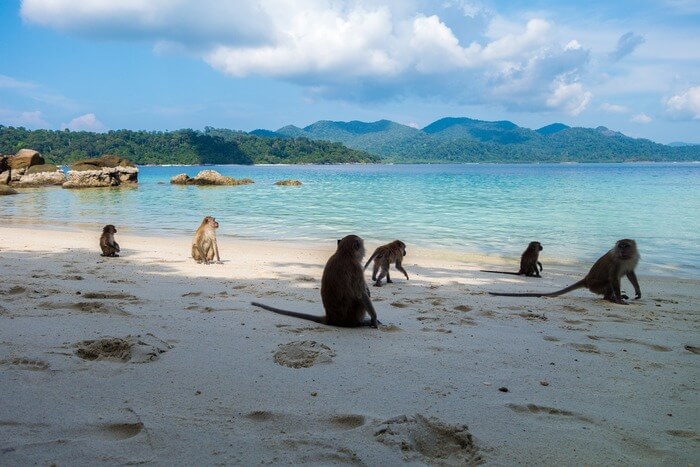
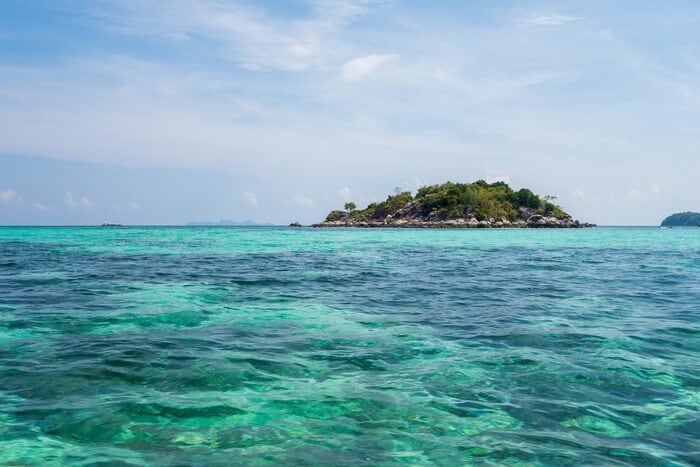
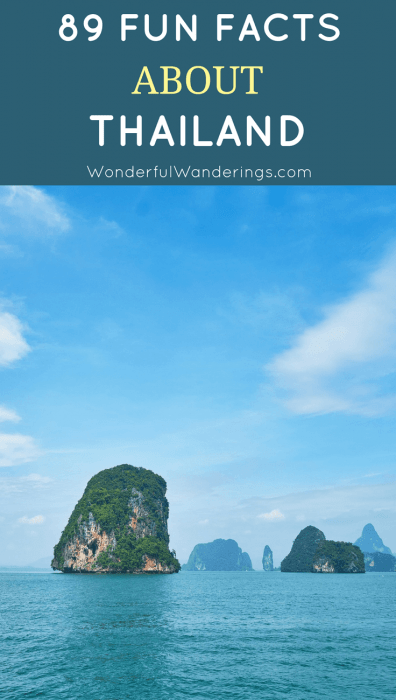
shobiga says
I already knew most of it